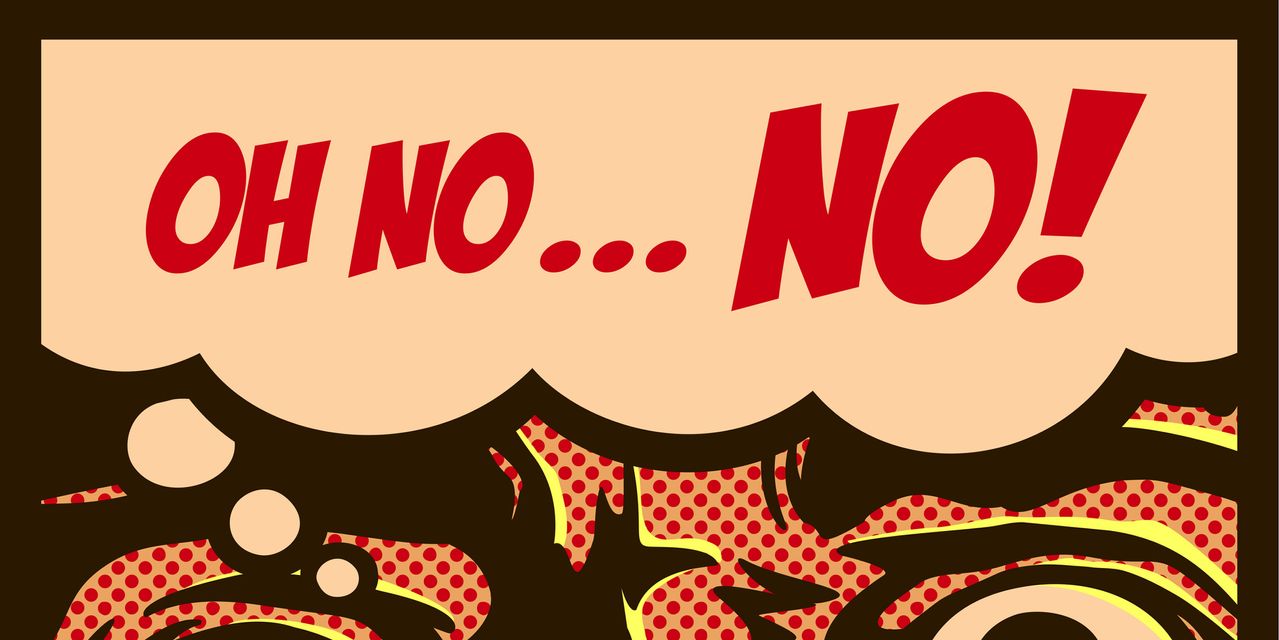More companies have been defaulting on their debts because of higher interest rates, but investors have been mostly ignoring that trend, according to Torsten Slok, chief economist at Apollo Global Management.
U.S. high-yield, or “junk,” bonds have been rallying this year, despite the bite of climbing interest rates and rising corporate defaults.
Junk bonds are frequently viewed as a fixed-income proxy for the stock market, since both can rally quickly against a bullish backdrop but also tend to sell off rapidly when sentiment sours.
A key gauge of risk sentiment shows U.S. junk-bond spreads near a 15-month low of about 382 basis points above the risk-free Treasury rate. That has spreads knocking on the door of BofA Global’s forecast for a trough of 350 to 375 basis points above the benchmark rate.
Investors typically demand more spread, or compensation, above a risk-free rate like the 10-year Treasury yield
TMUBMUSD10Y,
when the economic outlook looks gloomier or when defaults climb.
But that hasn’t been the case in recent months, despite defaults in junk bonds (shown here as a blue line) and in all corporate bonds (green line) climbing since the Federal Reserve began raising rates in March 2022.
“In other words, Fed hikes are biting harder and harder, and all investors should have a view on how high they think default rates will go during this cycle,” Slok wrote in a Tuesday note to clients.
Slok said the “aha moment in markets” likely will come once “some household name in credit” defaults, which could spark “an overnight change in market sentiment from bullish to bearish.”
After more than a decade of low rates, junk bonds finally have been offering investors meatier yields, with U.S. junk bonds last pegged at an 8% yield, mostly due to the march higher in Treasury yields with the Fed’s rate hikes.
Like many U.S. homeowners, many corporate borrowers refinanced older debt at historically low pandemic rates, keeping a lid on the impact of higher rates.
Only 11% of U.S. corporate bond coupons have reset higher, according to BofA Global strategists. That means “most issuers continue to pay old coupon,” despite the Federal Reserve having jacked up rates by 500 basis points since last year.
It also provides a cushion for many higher-risk corporate borrowers, even if the Fed raises rates again as expected on Wednesday to a range of 5.25%-5.5%.
Read: ‘No chance we’re having a soft landing’: Stock-market strategist David Rosenberg gives Powell’s Fed no credit — and no mercy
The big question is what might happen if the Fed holds rates higher for a couple of years, and more companies with maturing junk bonds struggle to refinance.
Stocks were edging up on Tuesday a day ahead of the Fed decision, with the Dow Jones Industrial Average
DJIA,
aiming for a 12th day in a row of gains. The S&P 500 index
SPX,
rallied 19% on the year through Tuesday, or roughly 5% off its record close in January 2022, according to Dow Jones Market Data.
Read the full article here


